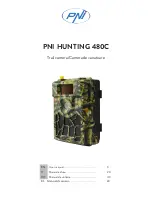
V1.02
Thom Hogan’s Complete Guide to the Nikon D300
Page 271
scene that contains many dark values (e.g. unlit, shadow
areas), the largest peaks may be to the left of the histogram.
Either case is usually okay, as long as you have a wide
distribution of pixels and neither extreme runs off the edge of
the histogram.
Note: Most users find it easier to “fix” dark images (e.g. increase
shadow detail) than to fix bright images (e.g. “pull back”
highlight detail). This is even true of NEF images, where you
can apply exposure compensation after the fact. However,
note that due to the way digital images are captured, noise
is more prevalent in the “dark” areas of your image than it is
in the bright areas
85
. Normally you don’t see the noise as it
is buried in very dark areas that print at or near black, but
when you use post processing techniques to “boost”
shadow areas in an image, you’ll also be boosting noise,
perhaps into visible range.
Note: Photoshop histograms are calculated a bit differently than
those the camera shows. One thing that confuses many NEF
shooters is that Photoshop histograms only show the top 8
bits of data. If you use Capture to output 16-bit images to
Photoshop, be aware of that!
The D300, like the D2 series, the D200, and the D3, has the
ability to show individual channel histograms. So what have
we been looking at up to this point in this section? Something
called a luminance histogram, which doesn’t take color into
account.
If, as I suggested earlier, you primarily use the
RGB
histogram
setting instead of the plain histogram display,
you’ll get
four histograms
on the screen at once: the
luminance histogram (white) is displayed underneath the
85
Why? Because the signal to noise ratio for a pixel value of 1,1,1 is lower than one
with a value of 254,254,254. Let’s examine a hypothetical example to find out why.
Let’s say that your camera has random noise “base” that averages 2 photons. Further,
let’s assume that the 1,1,1 value represents a photosite that’s captured 100 photons.
The signal to noise ratio for that pixel is 50:1. The 254,254,254 value represents
capture of perhaps 10,000 photons, so the signal to noise ratio is 5000:1.
















































